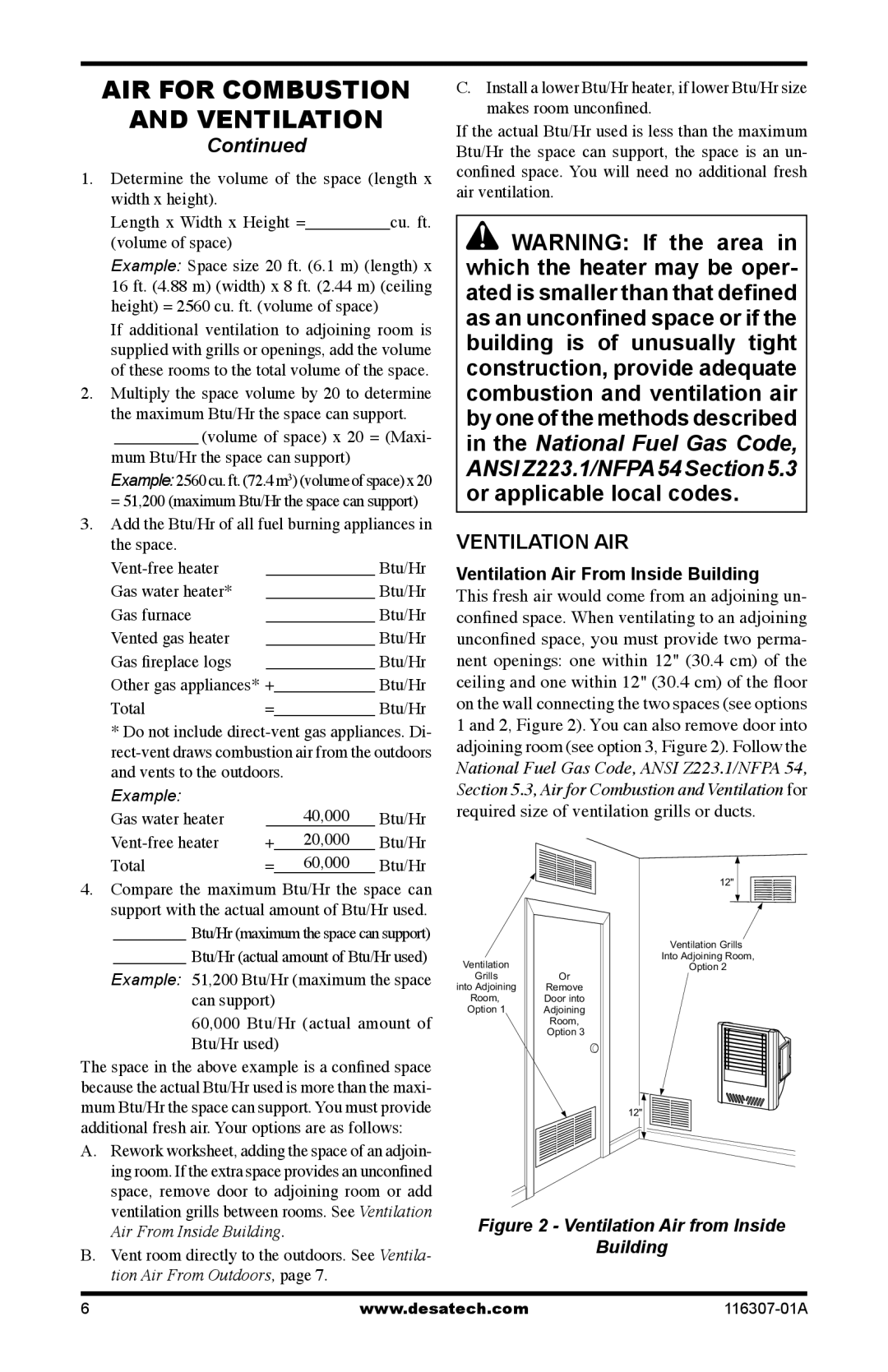SF20NT specifications
Desa SF20NT is a versatile and innovative gas-fired space heater designed for efficient heating solutions in various environments, whether in residential, commercial, or industrial settings. This model is known for its high performance, energy efficiency, and advanced technology, making it a popular choice among users seeking reliability and effectiveness in their heating needs.One of the primary features of the Desa SF20NT is its impressive heating capacity. With a heating output of around 20,000 BTUs, it can effectively warm spaces up to 1,000 square feet, making it suitable for larger areas. This capability is enhanced by the heater's superior metal construction, ensuring durability and long-lasting performance.
In terms of technology, the Desa SF20NT incorporates a direct vent system that utilizes outside air for combustion. This feature not only increases efficiency but also enhances safety, as it minimizes the risk of hazardous fumes entering the living space. The direct vent system allows for installation flexibility; the unit can be vented horizontally through a wall or vertically through a roof, catering to different building designs.
Another standout characteristic of the Desa SF20NT is its thermostat control, which allows users to maintain a consistent temperature easily. This feature contributes to energy savings by enabling the heater to operate only when necessary, thus reducing unnecessary heating costs. Additionally, the unit includes a programmable timer, allowing users to set specific heating schedules, further optimizing energy use.
Safety is also a critical aspect of the Desa SF20NT design. It comes with built-in safety features such as a flame sensor and a safety shut-off system, ensuring that the heater operates under safe conditions at all times. The unit is designed to meet stringent safety standards, giving users peace of mind.
In summary, the Desa SF20NT is a powerful, efficient, and safe space heater that is equipped with modern features and technologies. With its high heating capacity, direct vent system, thermostat control, and safety mechanisms, it stands out as an excellent choice for anyone looking for reliable heating solutions. Whether for home or business use, the Desa SF20NT is built to provide comfort and efficiency year-round.

